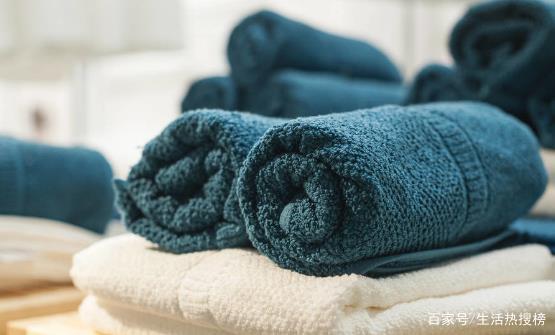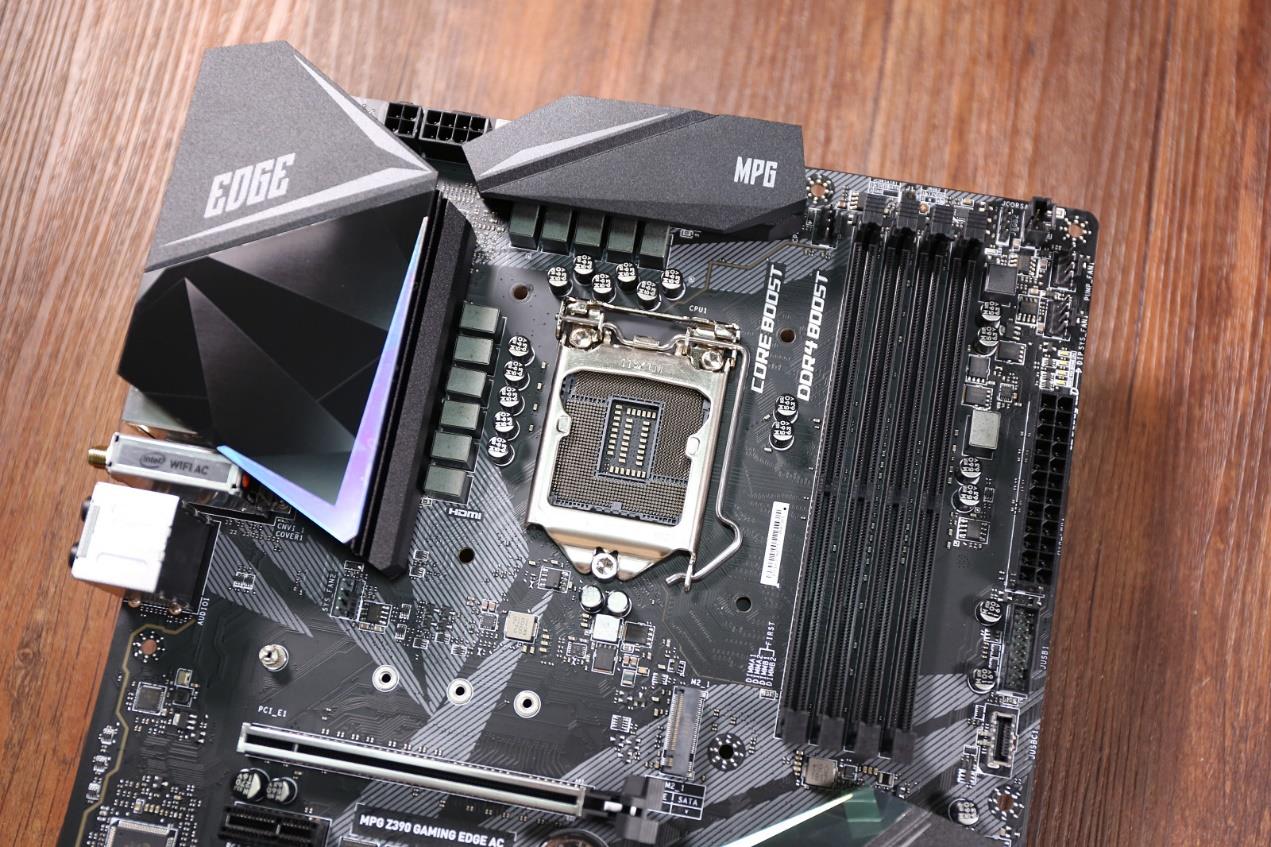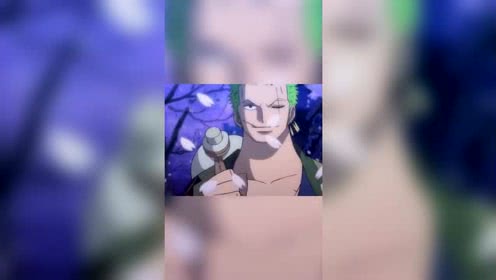
0462-578211736
12807045223
时间:2025-01-07 19:11:04

Meredith Perry is tired of wires.梅雷迪斯o佩里早已受够了各种电池线。The 25-year-old was still an undergrad at the University of Pennsylvania when she built the first model of her wireless charging system and demonstrated it at the All Things Digital conference in 2011. (“It was basically like two toaster-sized boxes that were two feet apart, and we showed that you could beam a certain amount of power over that distance with ultrasound,” she says.) Its name? uBeam.2011年,现在25岁的佩里还是宾西法尼亚大学的一名本科生。就在那一年,她发明者了她的第一款无线充电系统,并在All Things Digital科技峰会上展出了一番。
(她讲解说道,“它基本上是由两台烤箱大小的盒子构成,距离两英尺近,我们在峰会上展出了一下如何通过超声波将电能横跨那段距离运送过去。”)这款设备叫作uBeam。
Now a company in its own right, uBeam says it has a working prototype and could have a product on store shelves within two years. There are other wireless charging systems already out there—Qi, for example, charges your phone as long as it sits on or inches away from a small base—but Perry believes uBeam’s technology is superior to all competitors. As part of the Shape the Future package in the January 2015 issue of Fortune, Perry, who lives in Los Angeles, sat down for a long conversation by phone about how she created uBeam and her vision of other future technologies. What follows is an edited transcript.现在,这家取名为uBeam的公司回应,它正在研制一款有可能在两年内就不会上市的原型产品。目前市面上早已有了一些无线充电产品。
比如,只要你把手机放到一个小基座上,或者离它几英寸近,一种取名为Qi的系统就可以给手机无线充电。不过佩里指出uBeam的技术比所有竞争对手都要先进设备。作为2015年1月《财富》杂志“塑造成未来”系列文章的组成部分,佩里在洛杉矶拒绝接受了长时间的电话采访,谈及了她一手创立的uBeam,以及她对其它未来技术的观点。
以下是经过编辑的专访国史。Fortune: Let’s go to a few years ago when you were first beginning to work on uBeam. What was the invention process like?财富:首先,请求谈谈几年前你刚开始研究uBeam时的情形。发明者的过程是什么样的?Meredith Perry: To create something really new is extremely difficult, because there’s no protocol. I can’t Google it online and find, “These are the steps that need to be taken,” or, “When somebody created something similar, these are the questions they asked, these are the people they talked to, and these are the materials they used.” Sometimes you have to create your own materials, your own design, your own manufacturing process. You have to create your own shipping materials that can cover the parts that you built. And we were building all of these tiny little devices by hand. We 3-D-printed tools that were useful in creating these devices. For example, we needed a holder that could hold a certain amount of micro beads. So that’s the level of minutiae you have to get involved with in order to actually execute on something that hasn’t been done before.梅雷迪斯o佩里:发明者某个全新的东西是十分艰难的,因为没原型可以参照。
不是说道你在谷歌上一搜寻,就不会表明“必须采行如下步骤,”或者“当某人发明者了类似于的东西时,他们回答了这几个问题,咨询了那几个人,这些是他们用过的材料”。有时你必需建构你自己的材料、你自己的设计以及生产工艺。而且你的材料必需涵括你要生产的零部件。这些小设备当时都是我们手工制作的。
有些对发明者这些设备有益的工具,则是使用3D技术打印机的。比如,我们必须制作一个容器来放一定量的微珠。为了已完成某件从前没有人做到过的事情,你必需要作好这些微小的细节。
In the beginning I looked at every possible option. I just wanted to solve a problem. And that was: I don’t want to plug in my laptop anymore. I want to be able to move around a room and use all my devices without plugging them in. And I learned that ultrasound was the only type of technology that would work for the experience we are trying to give, which is the Wi-Fi for charging.最开始,我完全看完了每个有可能的方案。我只是想要解决问题一个问题,而那个问题就是:我想再行给我的笔记本电脑插电了。我想要在一个房间里随时随地用于我的所有设备,而不必给它们电池。我了解到,超声波是唯一一种需要获取我们想的无线充电体验的技术。
Then I basically stopped at what materials we needed to make that happen—they’re called transducers, which convert electrical energy into sound and sound back into electricity. I knew that for this project to work, I needed the right transducer, and a transmitter that needs to have this amount of power and be able to beam that power across the room and hit these targets, and so on.然后,我基本上中断在这种技术所必须的材料上——这种材料叫作“换能器”,它可以把电能转化成声波,再行把声波转化成为电能。我告诉这个项目要想要顺利,必需要有准确的换能器,另外还得有一个能升空充足额度电能的发射机,等等。
And that existed already?这些否早已有了?Yes, transducers are used in speakers. And that’s effectively what uBeam is: a speaker. To make sound, in general you plug in a speaker, which is a bunch of sonic transducers. And we’re using ultrasonic transducers, which is sound above what you can hear. So when you plug in a speaker, you’re taking electricity from a wall, and the electricity is converted into sound, and that sound travels through the air. You’re converting electrical energy into acoustic energy. So that already exists. But a speaker is radiating out sound in 360 degrees, and you’re not going to get that much power from sound unless you focus it. So you have to do the same thing you would do with a laser beam, or with a light bulb—you take the energy and funnel it into a cone. But we’re not physically focusing it, we’re digitally focusing it. So we had to create a transmitter that digitally focuses sound to get enough power out of our ultrasonic speaker across the room. So the whole concept of uBeam worked because I knew that transducers existed. It was just a matter of thinking about sound as a form of energy, which people don’t often think about.是的,换能器被用在扬声器中。而且只不过uBeam本质上就是个扬声器。
为了收到声波,你要再行给一个扬声器通电,这个扬声器包括了很多声波换能器。我们用于的是超声波换能器,它的音频是人耳听得将近的。所以当你把这个扬声器通电后,你可以从墙上的电源取得电力,然后电力不会被转化成为声波,声波不会在空气中运动,这样你就把电能变为了声能。这种技术早已不存在了。
但是扬声器是360度电磁辐射的,这样衍射的声波不了产生充足的能量,除非你让它集中于一起。所以你要做到的事情就是像激光或电灯一样,要用一个细管体让它探讨。
但我们并没使用物理设备让它探讨,而是利用数字技术让它探讨。所以我们必需建构一个能令声音展开数字探讨的发射机,让我们的超声波扬声器能收到充足的能量跨越整个房间。所以uBeam的理念之所以有效地,就是因为我告诉换能器是不存在的。所以你只必须把声波想要成一种能量才可,只是人们一般来说想不到这一点。
Anyway. I’m kind of going into weird details about this.关于这个东西我样子说道得过于过细节了,听得一起有点怪异吧。No, it’s fascinating. Let’s talk more about the general process. What was your work method?不,它十分有意思。让我们多说道说道它的一般程序。
你的工作方法是怎样的?Well, back in 2012, we had raised a bunch of money, I had this whole plan planned out, but it was extremely difficult because I was working with only contractors. Up until a few months ago, even. Until we raised our Series A [funding round, totaling $10 million and led by Upfront Ventures] we didn’t have any full-time employees except me. So what I did was broke apart the technology into its pieces. I had people working on the transmitter, and there are the electronics behind the transmitter, so I contracted people to create the electronics behind the transmitter. Then I did tons and tons of research to figure out, “What is the most powerful, in-air, ultrasonic transducer I can get?” There are a zillion different types of ultrasonic transducers. Most are made for medical purposes, like sonograms. Then there are people that have designed transducers for cars, like when you back up and you hear the “beep beep.” Then there are transducers you use underwater for sonar, like on a submarine. I needed to figure out which is the best transducer I can use that will beam power through the air. And of course, nothing had been created before that was even close.在2012年的时候,我们融到了不少资金,我早已有了整个计划,但整个过程还是十分艰苦的,因为当时我不能与承包商合作。甚至仍然到几个月之前还是这样。仍然到A轮融资完结(该公司取得了由Upfront Ventures公司领投的1000万美金),除了我自己以外,我们甚至连一名全职员工都没。
所以我不得已把技术分为一块一块的。有人专门做到发射机,发射机后面还有一些电子元件,所以我又跟人投了合约,让他们去做到发射机后面的电子元件。
然后我做到了大量的研究,企图找到我能取得的最强劲的超声波换能器。超声波换能器的种类数不胜数,大多数都用作医疗用途,比如超声波扫瞄。另外还有人设计了汽车用的成像换能器,比如方向灯雷达。
还有一些是用作水下定位的,比如潜艇用的那种。我必须确认哪种换能器是我必须的,也就是需要通过空气传送能量。
当然,在此之前根本没有人作出过哪怕与它较为相似的东西。There was one type of transducer that came out of a university, and it was kind of close, all we had to do was change this, this, and this, and theoretically we should be able to output the power we need using this design… so I contracted the people that wrote those papers to design those transducers. Then I needed someone to design the transmitter transducer, but I also needed someone else to design the receiver transducer, which would capture the energy. So I had individual people working on individual parts of the system.有一个大学做到过一种换能器,它却是较为相似了,但是我们也得对它改了又改。
理论上我们可以通过这个设计传送能量……所以我联系了这些论文的作者,请求他们设计这些换能器。然后我必须有人设计升空换能器,同时我也必须有人来设计接管换能器。所以我是让有所不同的人来设计系统的有所不同部分。
It sounds almost like an assembly line.听得一起像一条组装线。Right. But it was very difficult because everybody was remote. That was the challenge of the way I set it up. But I could not get anyone to come on full-time. And I didn’t necessarily need anyone to come on full-time, I just needed each person to finish their one part.是的,但这个过程很艰难,因为每个人都离我较远。这也是我的工作方法所带给的挑战。但是我不了让任何人来全职工作,而且我也没适当让任何人来全职工作,我只必须每个人已完成他们那一部分就可以了。

The part we couldn’t crack was the transducer. It took us a total of 14 months working on that one particular problem.最好撕开的骨头就是换能器,这个问题花上了我们整整14个星期的时间。But that one part is the core engine, isn’t it?但这个部分正是核心引擎,是吗?Well, for a system to function each part needs to work, but ultimately this piece is the heartbeat, yes.一个系统要想要工作,每个零部件都得工作才讫,但最后这个部分是它的心脏,所以是的。So then it makes sense that the transducer took the longest.所以说道,换能器花上了最久的时间是也有道理的。Yes, but I didn’t realize just how hard it would be.是的,但当时我没有意识到它不会这么艰苦。
Had no one ever tried wireless charging before?之前没有人尝试过无线充电吗?Wireless charging as a category absolutely has been tried before and is being done by multiple parties using different technologies. But in terms of ultrasonic power, no. Anything that can be beamed through the air can be converted into a usable type of energy. So, people have tried laser for wireless power, but lasers can blind you. And then there’s [Duracell] Powermat, which uses induction and is magnetic, so you stick your phone on a mat and it charges. I don’t consider that true wireless power. Then with magnetic resonance coupling, which a company called WiTricity is using, it’s a totally viable technology but it’s only effective in charging really large objects over really short distances. If you want to charge something that way at a greater distance, you need receivers that are larger than the device you’re charging, so there’s a convenience issue.无线充电作为一种技术门类,当然认同早已有人尝试过了,而且是被很多人用于很多有所不同的技术尝试过了。但在超声波这一块还没有人尝试过。任何能被升空到空气中的东西都可以被切换为某种能用能源。
因此人们早已尝试过用激光无线充电,但激光可以致盲。此外还有一家叫Powermat的公司用于了电磁技术,你可以把手机放到一张电池夹上构建电池。但我指出它还不是确实的无线充电。
另外一家名为WiTricity的公司还用于了电磁共振耦合技术,这也是一种几乎具备可行性的技术,但它只在给距离很将近的大型物体电池时才有效地。如果你想要在很远的距离上给设备电池,那么它的接收器要比你想要电池的设备还要大。所以还不存在一个便利性问题。So at the end of the day, ultrasound is the only technology that is safe, that can travel the distance, that can charge your device, while remaining small and compact. Ultrasonic is the only type of energy that can be commercialized for consumer devices.因此,归根到底,超声波是唯一一个既安全性又可以远距离电池的技术,同时又可以维持设备的小巧灵活。
超声波是唯一一种需要用作消费电子产品的具备商用前景的无线充电技术。Well, with one hurdle being that it doesn’t work through walls, like Wi-Fi does.但是它也有一个缺失,就是没办法像Wi-Fi那样穿墙。Well, it’s not necessarily a hurdle if you look at the positives. It’s what makes ultrasound the most secure data transmission system in existence.不过,如果你想到它的益处的话,这也不一定算数一种缺失。

正是这种特性,使得超声波沦为目前最安全性的数据传输系统。But, pie-in-the-sky hope, you’d want it to work through walls, right?但是你还是期望它需要穿墙的,对吗?Oh, of course. But it’s physically impossible. If it were possible, I would take that over the secure data transmission. But even working in one room, think about where that can be applied. Not only within homes and rooms, but think about airports, conference halls, concerts. And you can charge an arbitrary number of devices at any time.当然,但它在物理上是不有可能的。如果真为有这种有可能,我指出它可能会伤害数据传输的安全性。
但即便它不能在室内用于,你也不妨妨看看它的应用于前景。它不仅可以在家庭和办公室用于,同时也可以用作机场、会议厅、音乐厅等等。而且你随时都可以给给定数量的设备电池。You first raised big funding when uBeam was in really early stages. Did you feel a lot of pressure and urgency?当uBeam还正处于十分早期的研发阶段时,你就取得了融资。
当时你的压力和紧迫感否相当大?There was a sense of insane urgency throughout the entire process. And I pushed and pushed and pushed, but you can only push so hard. I had set myself an artificial deadline, and I was continuously disappointed that I wasn’t hitting that. But in speaking with people who had created new technologies before, they would say, “Holy crap, you did that in two years? That’s incredibly short.” In my mind, we were like dinosaurs already, but people who have actually experienced creating new technology before said this was actually pretty fast. But the process killed me. People would check in and ask our progress, but to explain what was actually taking so long would take hours.在整个过程中,我都有一种近似于可怕的紧迫感。我大大地向前推展它,但你能做到的也就是用力推展它而已。我给自己原作了一个时间线,但由于无法符合它,因此我常常深感沮丧。
但是在与发明者过新技术的人聊天时,他们不会说道:“天哪,你用了两年就把它做到出来了?时间较短得令人难以置信。”在我看来,我们花上的时间像恐龙时代一样漫长,不过对于那些确实经历过发明创造的人来说,他们不会实在这个过程早已迅速了。但是这个过程伤痛杀了。
人们不会过来问我们的进展,但是光要说明哪个流程要花上这么长时间,就得花上上几个小时。Was that frustrating?这个过程令人失望吗?Of course. And the other thing is that throughout the process, I always thought, “Okay, it’s going to work in three months. We’ve got this great new idea to make this transducer function.” So instead of giving someone an update I’d say I’ll tell you in one month. But then we’d fail, and then we’d say we will make a certain change, and then it will work, and that happened about five times. It took about three months to make each change. It was extraordinarily expensive every single time we wanted to make a change to the device. And the lag time was mind-boggling. When you fail five times but you take tiny steps forward each time, it keeps you going. You can stay positive because there’s still light at the end of the tunnel. But at the same time, it really wears you down. You constantly have to think, “Okay, so if this next option doesn’t work, what will we do?” And you just can’t stop until you accomplish your goal. What really kept me going through the entire process was, “Even though this is so hard, it’s still possible.” And I knew that if it was still possible, I had to do it, because it would be so huge. I know that if I was working on something smaller, or something that I didn’t believe could make such an impact on the world then I wouldn’t have been able to keep going through those times.当然。
这种失望感觉跨越整个研发过程,我总是想要:“好吧,三个月里就会见效果,我们早已有了很好的新点子来让这个换能器出有效果。”所以有人回答时,我会立刻给他对系统,而是说道我会在一个月内告诉他你。不过后来我们告终了,然后我们不会说道,我们要做到一些转变,这样它就能出效果。
这种情况大约反复了五次,每次转变都必须三个月的时间。每次我们想要对设备作出某种转变,代价都是十分高昂的。而且它推迟的时间也是十分宽的。
当你告终了五次,但每次都获得了某些微小的变革时,它仍然促成着你继续前进,你依然可以维持悲观,因为前方早已经常出现曙光了。但与此同时,它也的确令其你深感心力交瘁。你不会不时地想:“如果下次还不顺利,我们该怎么办?”在最后构建你的目标之前,你显然停不下来。

确实使我熬过整个过程的是这种点子:“尽管它很难,但它是有可能构建的。”我告诉只要它是有可能的,我就必需做到下去,因为它是一件意义十分根本性的事。如果我做到的是某件略为小的事,或是某件我实在会对全世界产生如此大影响的事,那么在这些时候,我有可能就坚决不下去了。So one of our contractors we brought on, who is is now our CTO, created an entirely new type of transducer during our 14-month marathon of death— it ended up working on the first try. We were running out of money. We had two designs running in parallel, and we knew one of them had to work or we’d be screwed. In the end, both designs worked, but his was so much cheaper and so much more powerful that we went with his.最后,我们的一位承包商,也就是我们的现任CTO,经过长达14个月的“丧生马拉松”,再一研发出有一种全新的换能器。
当时我们早已没资金了,我们同时在测试两个设计,我们告诉其中一个必需顺利,否则的话,我们就完全玩完了。最后,两个设计都顺利了,但他的设计要低廉得多,也强劲得多,所以最后我们使用了他的方案。Take me to the moment when the prototype worked successfully, if there was one big moment.说道说道原型产品顺利的那一刻,如果不存在某个最重要时刻的话。It was when our CTO’s transducer worked. To paint the picture of what life was like at that time: for six and a half months, from December 2013 through June 2014, I was basically living in the tiny garage of my CTO in northern Virginia. It was the worst winter of my entire life, and we spent 10 hours a day just like little Foxconn workers in this garage with no windows, breathing in toxic fumes and trying to get this thing to work over and over and over again.那就是我们CTO的换能器开始奏效那一刻。
我给你刻画一下我在那段时日的生活状态:从2013年12月到2014年6月的六个半月里,我基本上都是住在我们公司CTO那间坐落于在北弗吉尼亚的小车库里。那是我整个人生中最差劲的一个冬季,我们就像富士康工厂的工人一样,每天要在那间没窗户的小车库里工作10小时,排便着剧毒的气体,一遍又一遍地重复尝试。It was either in April or May when we tested out the hybrid, it worked, and I literally screamed for joy. I had the biggest smile on my face because I knew that the future was bright. We knew it was real, it’s going to work, we proved the last piece that we needed to prove.到了四月或五月,我们再一测试了最后的产品,而且它顺利了,从不滑稽地说道,我幸福得尖叫声了一起。
我的脸上挂着仅次于的笑容,因为我告诉前途是光明的。我们告诉这是知道,它不会顺利的,我们检验了必须检验的最后一步。And now we all just wait for it to come out.现在我们都在等它上市销售。
Yes. Most of the world still doesn’t know about this, which is awesome. So we’re going to release it when we release it, and it’ll be something completely new, and I think that the world will be delighted by the experience.是的,全世界大多数人还不告诉它,但它的确很拜。所以我们不会自由选择适合的时机举办发布会,它不会沦为一种全新的技术,我指出全世界都会因为这种体验而深感激动。Looking toward the future, what are some of other existing or eventual technologies that excite and interest you?共创未来,在现有或有可能经常出现的技术中,有哪些让你激动或感兴趣?There are a few. And I’ll try to be quick because I get a little too excited. They span between health and transportation and 3-D holograms. So, last year I got really into the idea of creating 3-D, touchable holograms in the air using fog. I wanted to create a system where you could be sitting next to somebody who is in China but could actually touch them, see them, feel them. I built a bunch of hologram machines, which was cool.有一些。
我会赶快说道,因为我有点过于激动了。这些技术主要在身体健康、运输和3D全息技术领域。去年我对利用光雾效果创建3D全息影像的技术十分感兴趣。我想要建构这样一个系统:你躺在这里,而你旁边那个人只不过身在中国,但你可以触碰他、看见他、感觉他。
我生产了很多全息投影仪,它们也很棒。Is this different from the Tupac hologram at Coachella in 2012?它与2012年科切拉音乐节上胞弟歌手图派克的全息投影有什么区别吗?Yeah. This would actually be a three-dimensional display, not just a projection. That’s one thing, the other is I think that people should have some kind of embedded blood sensor that reads your levels continuously. To me, it’s kind of crazy that only once people feel really crappy, they go to a doctor and find out what’s wrong with them. Why don’t we have some sensor built into the body that lets you know before you feel ill, and ultimately, is connected to an embedded dispensary that can put sugar into your body if your glucose is low? You basically would have an external, but embedded, automatic system that regulates your body.是的,有区别。它是确实的三维影像,而某种程度是一个投影。
另一种技术是,我实在人们应当在身体里植入某种血液传感器,不间断地监测你的体征指标。现在人们只有在很难过的时候才去看医生。为什么我们不出身体里植入一个传感器,在症状显现出来之前就给我们发送到警报呢?另外,这个传感器还可以与嵌入式“药箱”配上用于,比如说当人体正处于低糖状态时,它就不会自动向身体获取糖分。也就是说,你不会有一个外部的,但同时又是嵌入式的自动化系统来管理你的身体健康。
This sound like the first step in making us all half-robot, though…这听得一起看起来人体半机器人简化的第一步。Right! Yes. What I think is crazy is we have so much data and insight into our digital world, but we have no insight into what’s actually going on inside the most important system of all, our bodies. And then, finally, curing cancer is a big one. If it’s not curable, we need to make MRI machines that detect lumps and growths much smaller than what they can detect right now. Part of the reason we detect cancer at stages where it’s a little too late is that the machines that detect cancer can only see lumps of a certain size. If we were able to detect cancerous growths at a size smaller, we could stop it earlier on. So instead of curing it maybe what we need to do is use machines to catch it much earlier.是的!对于我们的数码世界,我们早已有了很多数据和看法,但对于最重要的系统,也就是我们的身体,我们却没充足的了解。最后,医治癌症也是一件大事。
如果癌症是无法根治的,那么我们也可以研制新型的核磁共振仪,在肿瘤比现在大得多的时候观测到它们的不存在。目前癌症一检查出来常常就是晚期,主要原因就在于现有的设备不能看见一定大小的肿瘤。如果我们能观测到更加小尺寸的肿瘤,我们就可以早地制止它。所以说道,与其想要办法根治它,也许我们应当做到的是利用机器早地捕猎它。
Many of these ideas you like—wouldn’t they scare most people? Its all very Isaac Asimov.很多你讨厌的点子不会会吓到多数人?它们听得一起很有阿西莫夫的风格。I’ve thought about how to implement this. Speaking for myself, I never want to go to the dentist, I never want to go to the various doctors. So if someone told me to implant something in my body, as a futurist, I’d be down, but as a citizen I would think it is annoying. And maybe scary. So I think it’s something that needs to be done when you’re super young with the guidance of a pediatrician. We could just get in the habit of, once you’re born, when you’re two years old or something, you get this thing implanted and you grow up with it and it becomes part of your life. People are just scared of things that they’re not used to.我早已想要过怎样实行这些点子了。说道到我自己,我从不讨厌看牙医,也从不讨厌看医生。
所以如果有人让我往身体里植入一个东西,作为一个未来主义者,我有可能被劝说;但作为一个普通人,我会实在这样做到很喜欢,甚至有些可怕。所以我指出这种事情应当在人十分小的时候,在儿科医生的指导下已完成。我们以后有可能教导这种习惯,也就是出生于后,约两岁大的时候,你就不会被植入这种东西,然后带着它长大,它不会沦为你人生的一部分。人们只不过是对自己不习惯的东西感到恐惧。
本文来源:PG电子·游戏官方网站-www.szydbw.com